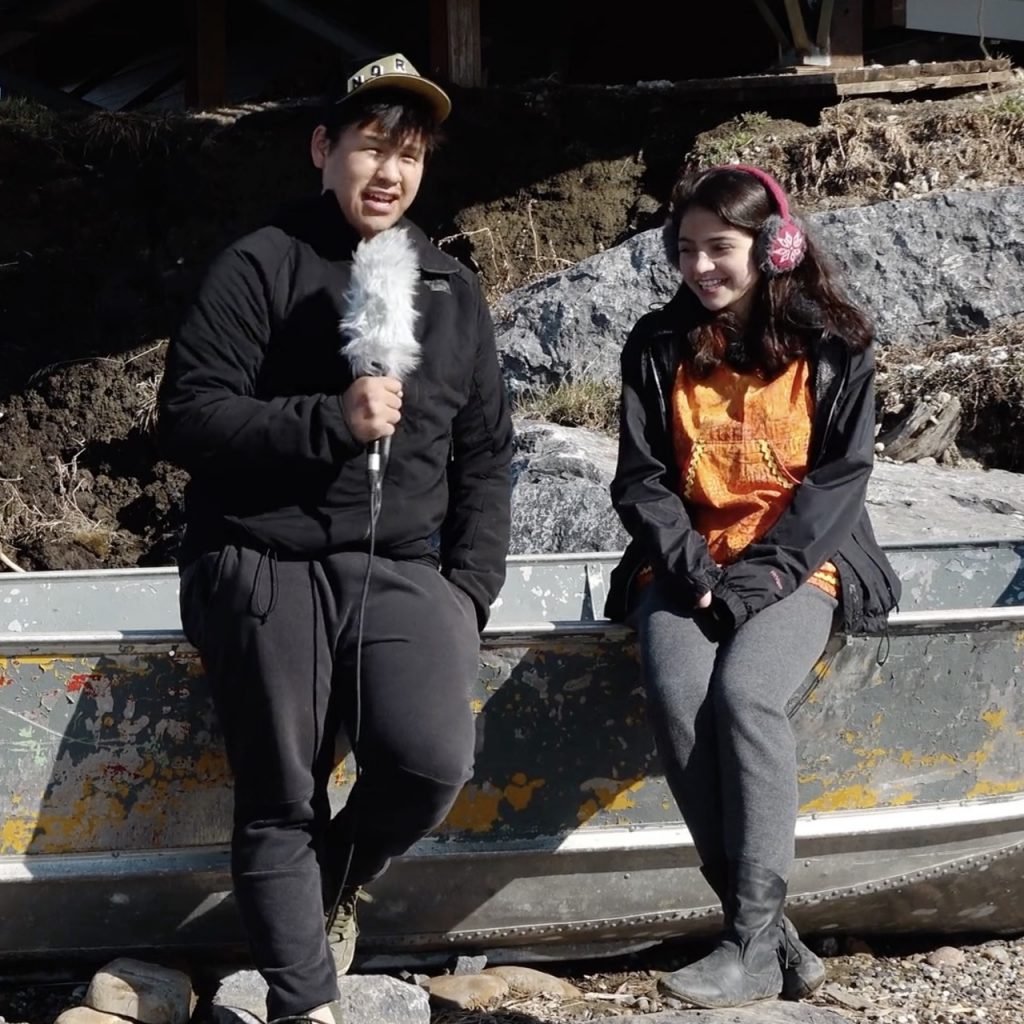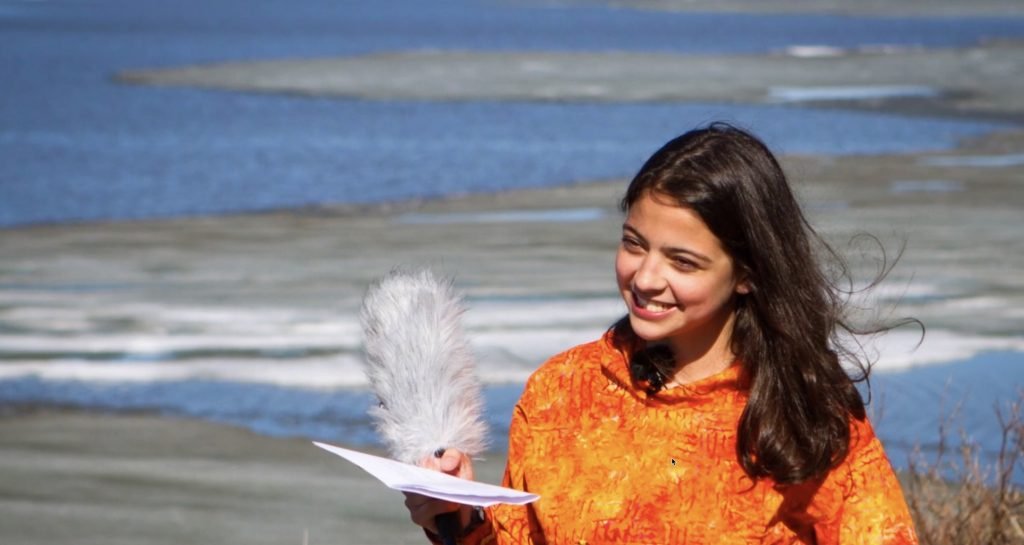By David Dodge and Kay Rollans
Last December, a group of seven teens from the northern Arctic community of Tuktoyaktuk, NWT, traveled to Madrid, Spain, to share their story at COP25, the UN climate change conference. Their community is literally slipping into the Arctic Ocean due to the effects of climate change.
Their method of communication? A 20-minute documentary called Happening to Us. They call their film collective Tuk TV.

Northern communities on the front lines of the climate emergency
We all know the planet is warming. But it isn’t all warming at the same rate.
The Earth is warming three to four times more quickly at its poles than anywhere else. Since the 1960s alone, temperatures in the region around Tuktoyaktuk have increased 3.4 degrees Celsius. (For perspective, consider that the [date] Paris Agreement is meant to ensure that the increase in global temperature does not exceed an average of 2 degrees above preindustrial levels.)

One of the most northern communities in Canada, Tuktoyaktuk is the canary in the coalmine of the climate emergency.
Natan Obed, the president of Inuit Tapiriit Kanatami, the organization that represents Inuit Peoples to the Federal Government, expresses concern in the film about the stress that the rapid rate of climate change is putting on traditional teachings.
“I worry that our landscape, this is going to be changed so rapidly that the skills that we’ve gained over millennia are going to be replaced by a lack of understanding of what is happening at any given year to our sea ice, and then to the weather patterns, and then also to all living things within it.”
“I know every year it’s getting worse and worse,” Randall Pokiak, an elder in the community, says in the film. “We get late freeze-up in the fall. Like we used to travel, started driving dogs over the ice in the middle of September. In October, we used to build igloos. That’s how much snow we had. Right now, you can’t even do that.”

As temperatures increase, sea ice melts and sea levels rise, eating away at the land. At the same time, permafrost is melting, destabilizing the land and making it even more vulnerable to erosion.
Tuktoyaktuk is shrinking fast enough to be noticeable even by the youth of the town. Seventeen-year-old Eriel Lugt, one of the filmmakers, remembers when there was a beach in front of her house. “There was quite a bit allowed to walk all around it. Now it’s just a big hole.”
Several houses, including Lugt’s, are imminently threatened by the erosion, and the hamlet is working on moving them to higher ground. In the (slightly) longer term, they are considering moving the entire community inland—a move that would cost the hamlet of about 900 residents $50 million.

Indigenous communities leaders in green energy transition
Many remote communities in Canada depend on diesel—a major contributor to greenhouse gas emissions—for their main source of electricity. Many communities, however, are starting to make the shift.
Fort Chipewyan, a remote community in northern Alberta, for example, reduced its diesel consumption by 20% by installing a
In the Yukon, the Kluane First Nation in the Yukon is set to install nearly 300 kW of wind power, supplying about 17 per cent of the community’s energy. And the Government of Yukon, in partnership with Yukon First Nations, has begun installing solar PV in communities around the territory.
Despite the long periods of darkness in the north, these have proven to be highly effective. Seventy-six kW of solar was installed in three remote communities in 2018 alone.
Initiatives like the Indigenous Electricity Technical Working Group in Alberta and the national Catalyst 20/20 project demonstrate the interest and commitment that many communities have in bringing clean energy to their communities.
Tuktoyaktuk has also installed some solar in the community, although it faces major infrastructural challenges, not least the question of whether the community will have to pick up and move.
The future of Tuk TV
For Eriel Lugt and her peers, the issues her community is facing are as much about today as they are about tomorrow.
“If we keep up the cycle of repeating what the older generations are doing, then we’re not going to have anything. We’re not going to have wildlife. We’re not going to have flowers growing out of the ground. We’re not going to have like clean air. It’s going to be all polluted and all used up. And then where will we go after that?” she relates in the film. “There’s no other world we can turn to. This is our only one and we’ve got to protect it like it’s our own because it is our own.”

The biggest problem, perhaps, is that so much of it is out of their control.
“People down south don’t even acknowledge climate change because they can’t even see it, and what they’re doing is really affecting us here. They don’t even know it, so they don’t even believe in it. It’s just like they do it and we get what they are putting out there, like we’re getting what they’re abusing on the land or the world.”
So the teens did what was in their control: They made a film. When they were invited to screen it at the UN climate change conference, they raised $45,000 to take themselves to Madrid to attend COP25, and showed their film to the world.

It was a big success. Their plans, now, are to keep making themselves heard through film. Tuk TV plans to extend Happening to Us to a feature-length documentary, with the second half focusing on solutions to the problems at hand. They also plan to film a documentary about microplastics.
“We are the next generation,” says Lugt. “We can make a change in the world.”
Happening to Us was to be screened twice at the 2019 UN climate change conference, but generated so much interest it had to be screened five more times. See the trailer here.






